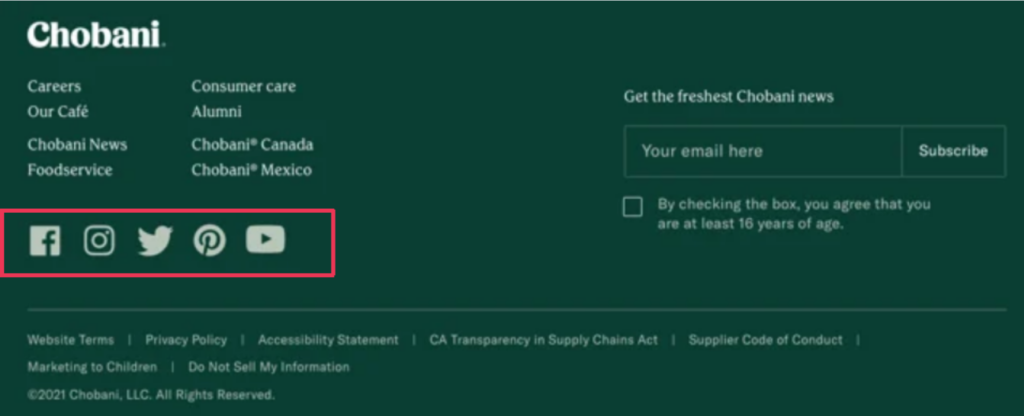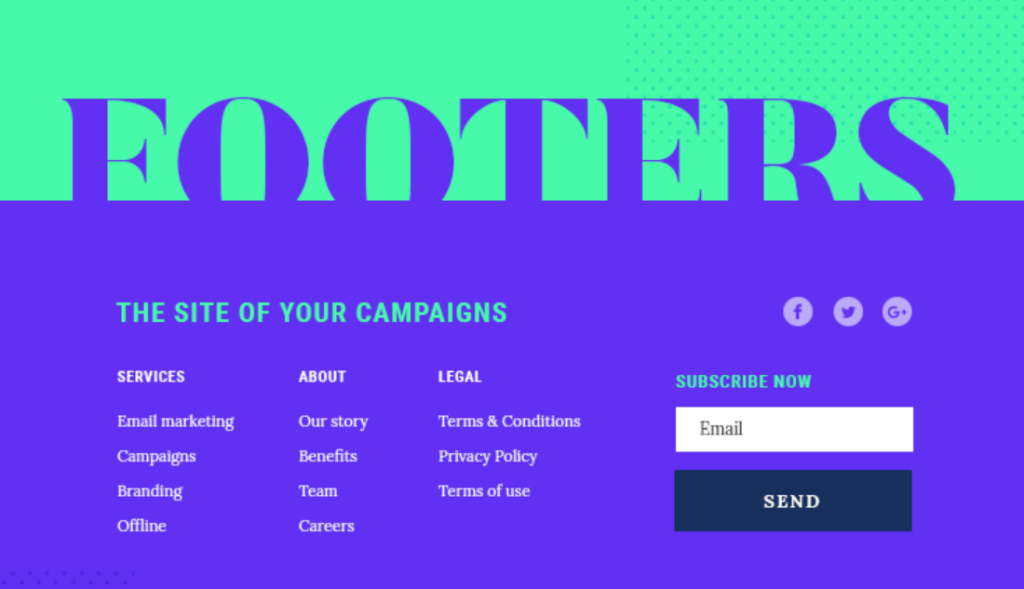In the ever-evolving landscape of online marketing, businesses are continually seeking new ways to enhance their website’s performance, increase user engagement, and ultimately drive higher conversion rates. While much attention is often focused on optimising the homepage, landing pages, and product descriptions, there’s one element that’s frequently overlooked yet possesses immense untapped potential: the website’s footer.
The footer is the unsung hero of your website, quietly residing at the bottom of every page, ready to assist and guide your visitors. It offers an exceptional opportunity to engage users, provide vital information, and drive conversions. This comprehensive guide aims to reveal the secrets of optimising your website’s footer for maximum conversion potential. We will delve into the strategies, techniques, and best practices that will empower you to transform your footer into a dynamic conversion engine.
Understanding the Importance of Website Footers
The first step in optimising your website’s footer is to recognise its intrinsic importance in the grand scheme of user experience and conversion strategies. To many, the footer may appear to be an inconspicuous piece of real estate at the bottom of a webpage, but its potential for impact is immeasurable.
Website footers often serve as the “information hub” of a website, offering a place for users to find essential information at their convenience. This can include contact details, links to privacy policies and terms of service, copyright notices, and sometimes even site maps. The footer’s primary role is to enhance user experience by providing quick access to crucial information, thereby fostering trust and credibility.
Furthermore, the footer is omnipresent, making it an excellent tool for consistently reinforcing your brand and message. It can make navigation more intuitive, offering users a quick way to access essential information, regardless of where they are on your site. A well-designed footer ensures that visitors can swiftly find what they need and can easily connect with your business.
Moreover, footers contribute to building trust. Contact information, copyright notices, and links to privacy policies communicate transparency and accountability. By housing elements such as this in the footer, users are reassured about the legitimacy of your website and your commitment to their needs.
The Anatomy of a High-Converting Footer
Optimising your website’s footer involves more than just understanding the psychological triggers that encourage user action. It also encompasses the practical aspects of designing an efficient and effective footer.
A well-optimised footer should start by capturing the visitor’s attention. Crafting an attention-grabbing footer is about more than just pretty design; it’s about making visitors stop and take notice.
Clear and Concise Navigation:
Website footers should be designed with clear and concise navigation in mind. Organising links for easy access and using meaningful labels are critical components of an efficient footer. By categorising links appropriately and ordering them logically, you can help visitors quickly find the information they seek. A clutter-free, organised footer contributes to a smoother user experience.
Contact Information and Trust Signals:
Building trust is a critical aspect of footer optimisation. Your footer should provide visitors with multiple avenues for contacting your business. This includes phone numbers, email addresses, and physical addresses, where applicable. Additionally, incorporating trust badges, certifications, and secure payment icons further boosts confidence in your site. These elements reassure visitors that their data is safe, reinforcing your commitment to transparency and trustworthiness.

Social Media Integration:
Social media is an integral part of modern digital marketing. Your footer should seamlessly integrate links to your brand’s social media profiles. This makes it easy for visitors to follow your social accounts, engage with your content, and share it with their network. The more seamlessly you integrate your social media presence into your website, the better the chances of building a loyal online community.

Email Subscription Forms:
An email subscription form within the footer can be a potent lead generation tool. Visitors interested in your content or products can sign up to receive updates, promotions, or newsletters. By capturing leads directly through the footer, you have a direct line of communication with potential customers.

Relevant Content and Resources:
Your footer can serve as a gateway to valuable content and resources on your website. By featuring popular blog posts, articles, or downloadable resources, you can keep visitors engaged and encourage them to explore more of your content.
It’s important to strike a balance between aesthetics and functionality – the design should complement the content. Visitors should quickly understand the purpose and value of the footer content. This section will delve deeper into crafting an attention-grabbing footer and the art of making your visitors want to explore further.
Once you have your visitor’s attention, the next challenge is to maintain their interest. Your footer should be engaging and offer value that aligns with your visitor’s needs or interests.
The key to achieving this is through strategically placed links to essential content or resources, ensuring that visitors can continue to explore the site with ease.
Mobile Responsiveness
In an era dominated by mobile devices, ensuring that your website’s footer is mobile-friendly is no longer an option—it’s a necessity. Mobile users have specific needs, behaviors, and expectations that differ from their desktop counterparts. A responsive footer is crucial to providing a seamless user experience and achieving higher mobile conversions.
Ensuring Mobile-Friendly Footers
Mobile users make up a significant portion of your website’s traffic, and their experience should be just as seamless as that of desktop users. This involves responsive design, which adapts your footer to various screen sizes while maintaining its functionality. A mobile-friendly footer should prioritise user-friendliness, finger-friendly elements, and a streamlined layout, ensuring that mobile visitors can easily access essential information and take action.
Mobile-Optimised CTAs
Mobile users interact with websites differently. When it comes to footer optimisation, it’s vital to design your calls to action (CTAs) with mobile visitors in mind. This means creating finger-friendly buttons and streamlining the user experience on smaller screens. Mobile-optimised CTAs should be easy to tap, with concise yet compelling copy that motivates users to take action. By ensuring that mobile visitors can efficiently navigate your footer and respond to your CTAs, you increase the likelihood of conversions on mobile devices.
Best Practices for Footer SEO
A well-optimised footer can enhance your website’s visibility in search engine results while maintaining readability and user-friendliness.
To improve your website’s search engine ranking, it’s essential to integrate relevant keywords into your footer content. By strategically placing keywords in your footer, you can enhance your site’s visibility in search results, potentially attracting more organic traffic.
The Future of Footer Optimisation
The digital marketing landscape is ever-evolving, with new trends and technologies continually reshaping user expectations and behavior. To stay ahead of the curve, it’s essential to anticipate and adapt to emerging trends in footer optimisation.
Emerging Trends
The digital landscape is dynamic, and footer optimisation is no exception. Emerging trends in footer optimisation include AI-driven personalisation, innovative user interfaces, and more interactive and dynamic footer elements. By staying informed about these trends, marketing professionals can proactively adapt their strategies to harness the full potential of their website’s footer.
By embracing innovative technologies and design approaches, you can continually enhance the role of your footer in driving user engagement and conversions.

Your website’s footer is no longer an overlooked or underestimated component. It’s a powerful catalyst for engaging visitors, fostering trust, stimulating desire, and guiding them toward taking meaningful actions.
As a marketing professional, the knowledge and practical insights you’ve gained will empower you to make data-driven decisions and create optimised footers that reflect the evolving digital landscape. By putting this knowledge into practice, you can transform your website’s footer into a conversion powerhouse, contributing to the growth and success of your online business. The power of the footer is yours to harness—seize the opportunity and watch your conversion rates soar.


